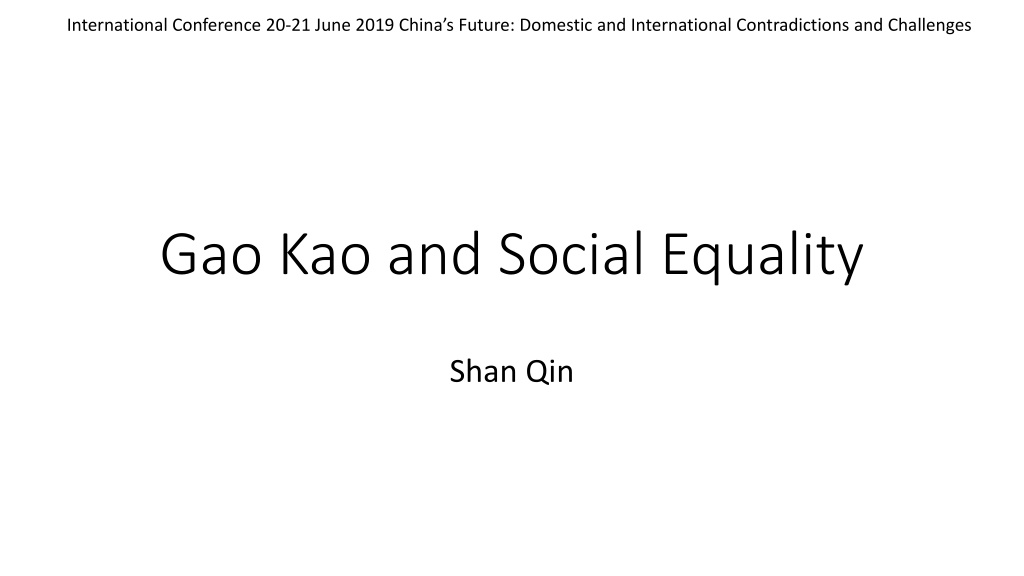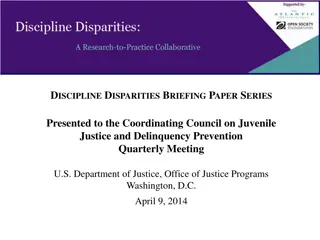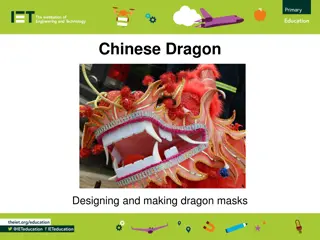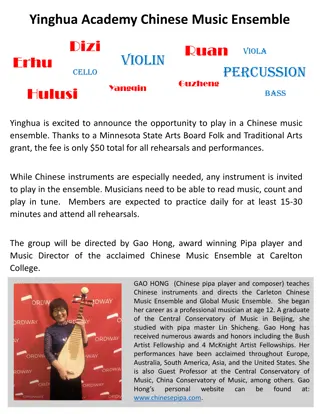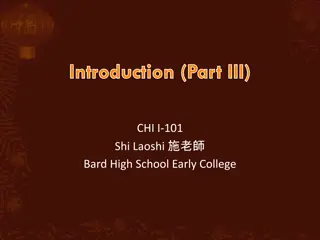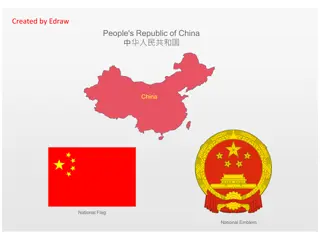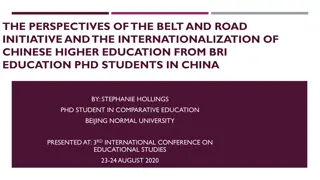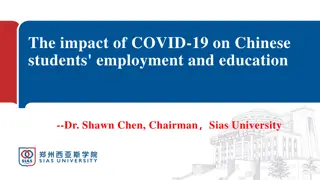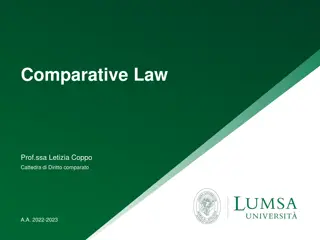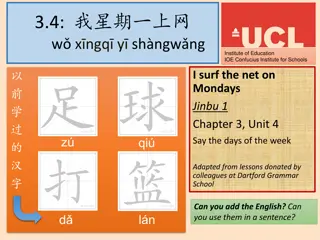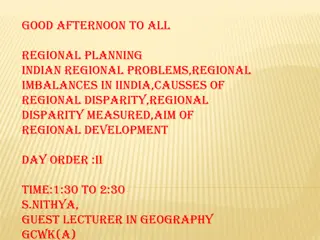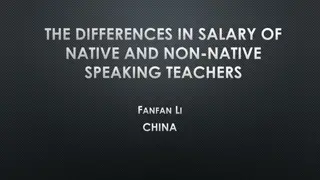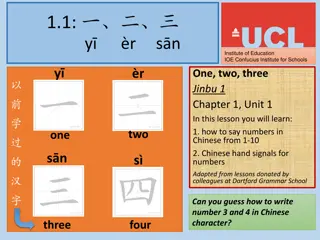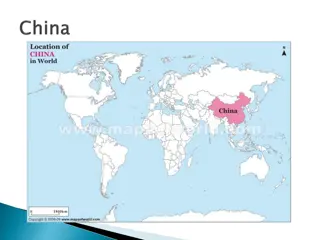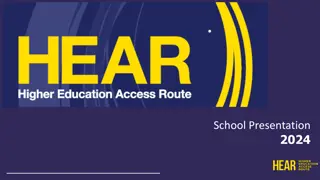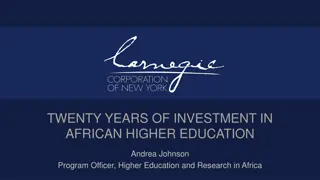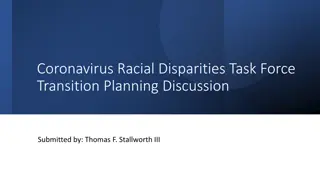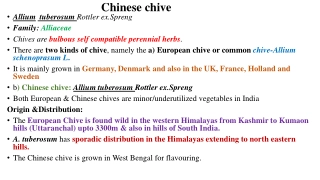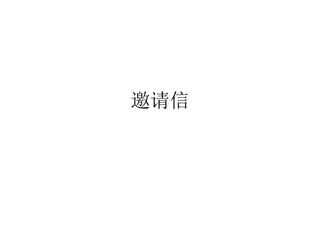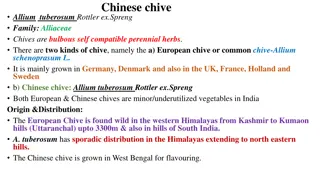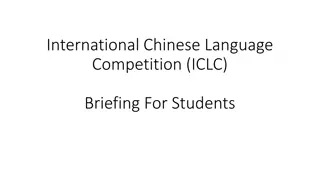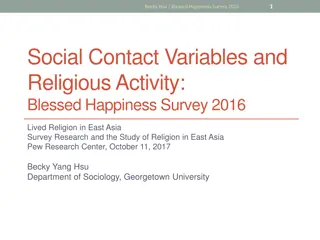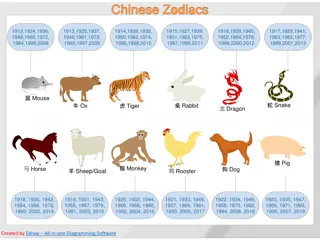Educational Disparities in Chinese Higher Education System
The international conference on China's future highlighted the challenges and contradictions in the education sector, particularly focusing on the Gao Kao examination and social equality. Deng Xiaoping's decision to reinstate the Gao Kao in 1977 changed the landscape of higher education in China. However, disparities exist in the distribution of high-quality educational resources, with subordinate universities facing limitations. Regional inequalities are evident, with Eastern China possessing more prestigious universities compared to the Western regions.
- Education Disparities
- Chinese Higher Education
- Gao Kao Examination
- Social Equality
- Regional Inequality
Download Presentation

Please find below an Image/Link to download the presentation.
The content on the website is provided AS IS for your information and personal use only. It may not be sold, licensed, or shared on other websites without obtaining consent from the author. Download presentation by click this link. If you encounter any issues during the download, it is possible that the publisher has removed the file from their server.
E N D
Presentation Transcript
International Conference 20-21 June 2019 Chinas Future: Domestic and International Contradictions and Challenges Gao Kao and Social Equality Shan Qin
Gao Kao The National College Entrance Examination An examination held once a year In the last year of senior high school a prerequisite for undergraduate level
Deng Resumed Gao Kao In late 1977, Deng Xiaoping officially resumed the traditional examination (1952) based on academics. This gave Chinese students a chance to receive higher education, again. A potential way to change their fate: climbing up the social ladder.
The Conflicts within the Field of Education The people s needs for higher education resources and the limitation of them The people s needs for the high quality of higher education and the scare of it
High Quality of Higher Education Resources Subordinate Universities 985 and 211 Uneven distribution of advanced educational resources
Subordinate Universities(24/75) Peking Uni. Tsinghua Uni. Beijing Normal Uni. Renmin Uni. Of China Agricultural Uni. China Beijing Foreign Studies Uni. Beijing Languages and Culture Uni. Uni. Of Science and Technology Beijing Beijing Uni. Of Chemical Technology Beijing Jiaotong Uni. Beijing Uni. of Posts and Telecommunications China Uni. Of Geosciences-Beijing China Uni. of Mining and Technology- Beijing China Uni. of Petroleum-Beijing Beijing Forestry Uni. Communication Uni. Of China Central Uni. Of Finance and Economic China Uni. Of Political Science and Law Central Conservatory of Music The Central Academy of Drama China Central Academy of Fine Arts Beijing Uni. Of Chinese Medicine North China Electric Power Uni. Uni. of International Business and Economic
Beijing alone has more 985+211 universities (26) than the 11 provinces/autonomous regions in Western China combined (17). In general, Eastern China has more 985+211 universities than Western China.
The Reality: Regional Inequality The most advanced educational resources/first-ranking universities are concentrated in Beijing, Shanghai and the middle region. Unequal Opportunities: Students from Western China have a much smaller chance to receive good undergraduate education in their hometowns. Studying in another province is not easy, either.
Regional Inequality continued Each university has a fixed admission quota for each province The quota is not evenly distributed The quota greatly intensifies the competition Less opportunity: good enough is not enough Students have to be much better than others to be admitted This makes studying in another region less possible for many students
The number of the students be accepted by Peking University and the number of students taking the exam by province in 2016 Tianjin Hebei Shanxi Inner Mongol ia Liaonin g Jilin Heilong jiang Shangh ai Jiangsu Zhejian Anhui Fujian JiangxiShan provi nce Beiji ng Hen an Hubei HunanGua g don g ngd ong Social science 72 24 46 28 18 26 26 13 19 20 17 12 24 7 24 18 20 25 26 Natural science 111 28 43 25 20 19 22 13 18 15 13 12 16 26 27 21 20 27 27 Total 183 52 89 53 38 45 48 26 37 35 30 24 40 33 51 39 40 52 53 60,000 423,10 339,10 0 201,10 0 218,20 0 148,00 0 197,00 0 51,000 360,40 307,40 0 509,90 0 175,00 0 360,60 0 students taking the exam 61,20 710,0 820,0 733,0 361,40 401,60 0 0 0 00 00 00 0 0
(continued) province Guangxi Hainan Chon Sichuan Guizhou Yunnan Tibet Shanxi Gansu Qinghai Ningxia Xinjiang gqing Number social 21 8 22 32 24 19 5 27 15 9 11 23 4 4 Number natural 16 8 17 31 20 16 5 26 15 10 11 22 5 6 total 37 16 39 63 44 35 10 53 30 19 22 45 9 10 296,00 0 Students taking the exam 330,000 60,400 248,9 571,40 373,80 281,10 24,0 328,00 44,600 69,100 166,100 00 0 0 0 00 0
Different Exam Questions Provincial Independent Proposition: Each province/autonomous regions can come up with their own exam questions for Gao Kao. The difficulty of the exams varies across regions Unfairness: some provinces students have to study harder than others Different score requirement: a case in 2016
2016 First-ranknatural 548 512 525 519 484 498 530 486 360 353 600 518 465 529 537 523 512 517 508 502 602 525 532 473 525 285/425 First-ranksocial 583 532 535 518 477 525 531 481 368 355 603 521 501 523 530 517 520 530 514 545 653 527 540 551 560 325/440 Second-ranksocial 532 460 416 460 375 417 413 401 Second-ranknatural 494 424 364 438 364 313 402 369 325 315 482 403 450 474 458 403 476 417 400 577 435 480 457 495 285/355 473 352 445 451 447 350 439 402 333 543 416 453 365 445 235/315
Takeaways: Three Conflicts The demand vs. the limitation The demand vs. the scare The reform vs. the unexpected consequences
